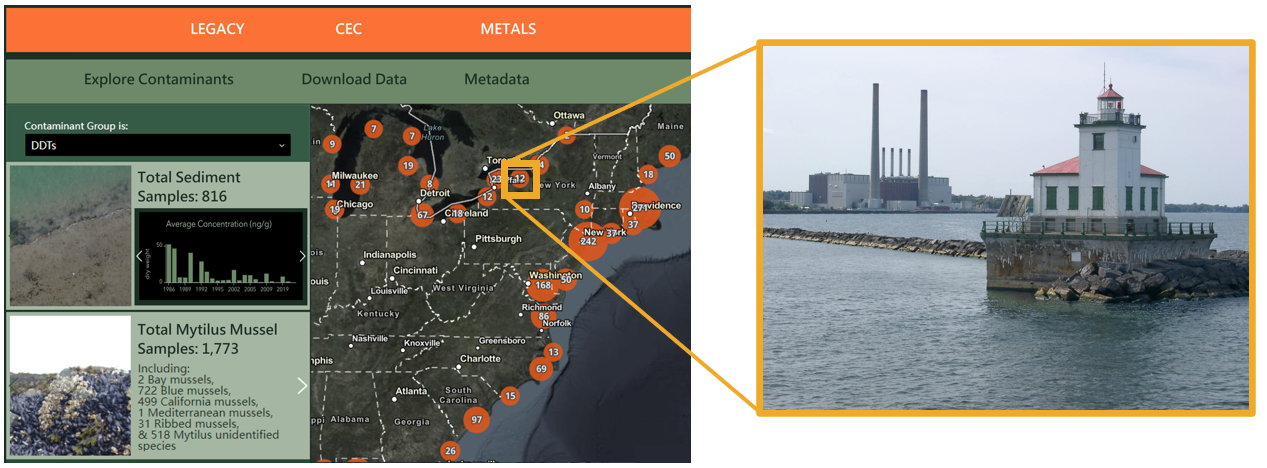The Coastal Pollution Data Explorer is an interactive web-based interface that enables users to explore spatial and temporal trends of chemical contaminant data in U.S. coastal areas. Users can compare, analyze, graph, and download NCCOS contaminant data from 1986 to the present.
Why We Care
The Coastal Pollution Data Explorer is a user-friendly website that provides a one-stop shop for access, download, and visualization of NCCOS’s chemical contaminant and toxicological data. The goal of the Data Explorer is to make almost 40 years of NCCOS data more accessible to the public through an interactive web-based data interface with features like previewing and downloading data, graphing, mapping, analyzing, and integrating results into customized Infographic Reports. A better understanding of the dynamics of coastal chemical stressors and ecological impacts will help inform the resource management decision-making processes.
What We Are Doing
The data exploration platform provides users with the following:
- Interactive & Consolidated Data Services. A single interface to serve high-quality and quality-controlled chemical contamination data.
- Applications and Tools. Users can download, compare, analyze, graph, and map contaminant data (including pesticides, PCBs, metals, PFOS/PFAS, and oil-related contaminants) from 1986 to the present. Data filters allow users to target data by where (sites, areas, regions), what (sample type and contaminant group), and when (1986 to present). These tools accelerate users’ interpretation of the data, including spatial and temporal trends.
- Answers to Frequently Asked Questions. Data filters, graphing, and mapping tools will target data within the maps and charts to answer questions such as: What are regional concentration trends of contaminants from 1990 to the present, and how does this vary between sediment and tissue samples? How has the concentration of pollutants changed within a major waterbody (i.e., Chesapeake Bay) since 1986? Where is PFAS concentration the highest in the nation? What has the sampling frequency near a site been for the last 20 years? What are contaminant concentrations near the socially vulnerable portions of my community?

The Coastal Pollution Data Explorer (left) provides contaminant data from across the United States. Over 600 contaminants from 1986 to the present are included and were collected at sites like Oswego Harbor in Oswego, New York (right). Credit: NOAA.
Development Progress
- Our national advisory group (including academic, state, federal, and non-profit organizations) meets yearly to test and inform the platform’s usability and identify critical features to ensure the Coastal Pollution Data Explorer meets users’ needs.
- Currently, there are three ways to navigate data within the platform:
- Contaminant Group Trends – Users choose a contaminant from the available datasets and explore its spatial and temporal trends with maps and charts.
- Customized Infographic Report – Users choose their area of interest and a comprehensive report of all the contaminants ever sampled there. They can also compare the contamination in their area of interest with regional and national trends.
- Data Download – Users can download a subset of the data customized to their needs. A full dataset download, of over 1 million records, is also available.
Next Steps
- Additional data (habitats, socioeconomic indices, contaminant data from special studies) and features will be added to expand the Data Explorer and provide more context to the chemical data.
- An initial version of the Data Explorer will be available online in the fall 2023. Additional data and features will be added to continue to expand the Data Explorer.
Stay Updated
- Please join our CPDE email list, where our team periodically shares new features and data updates. Your contact information will not be shared, and you can manage your subscription.
